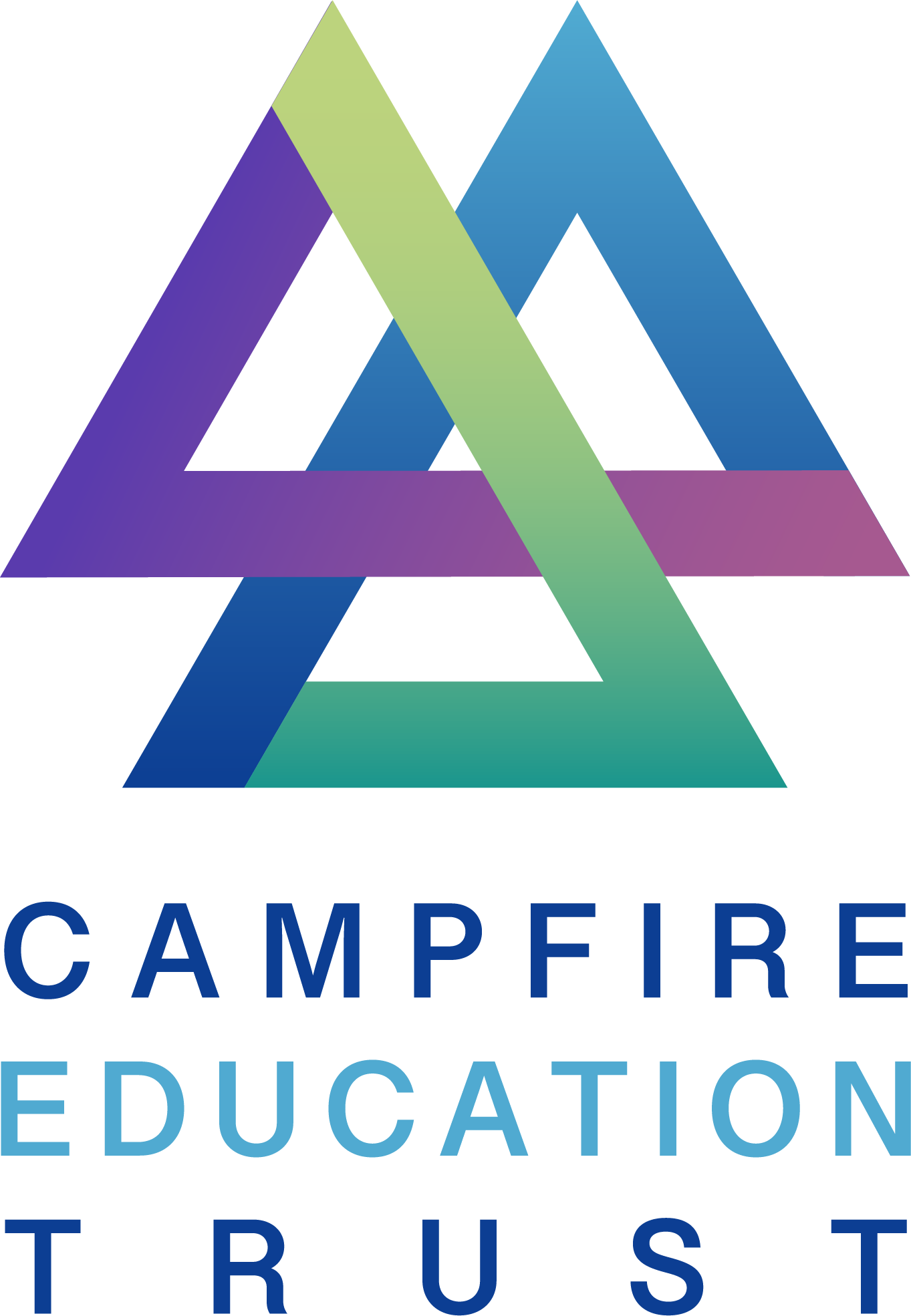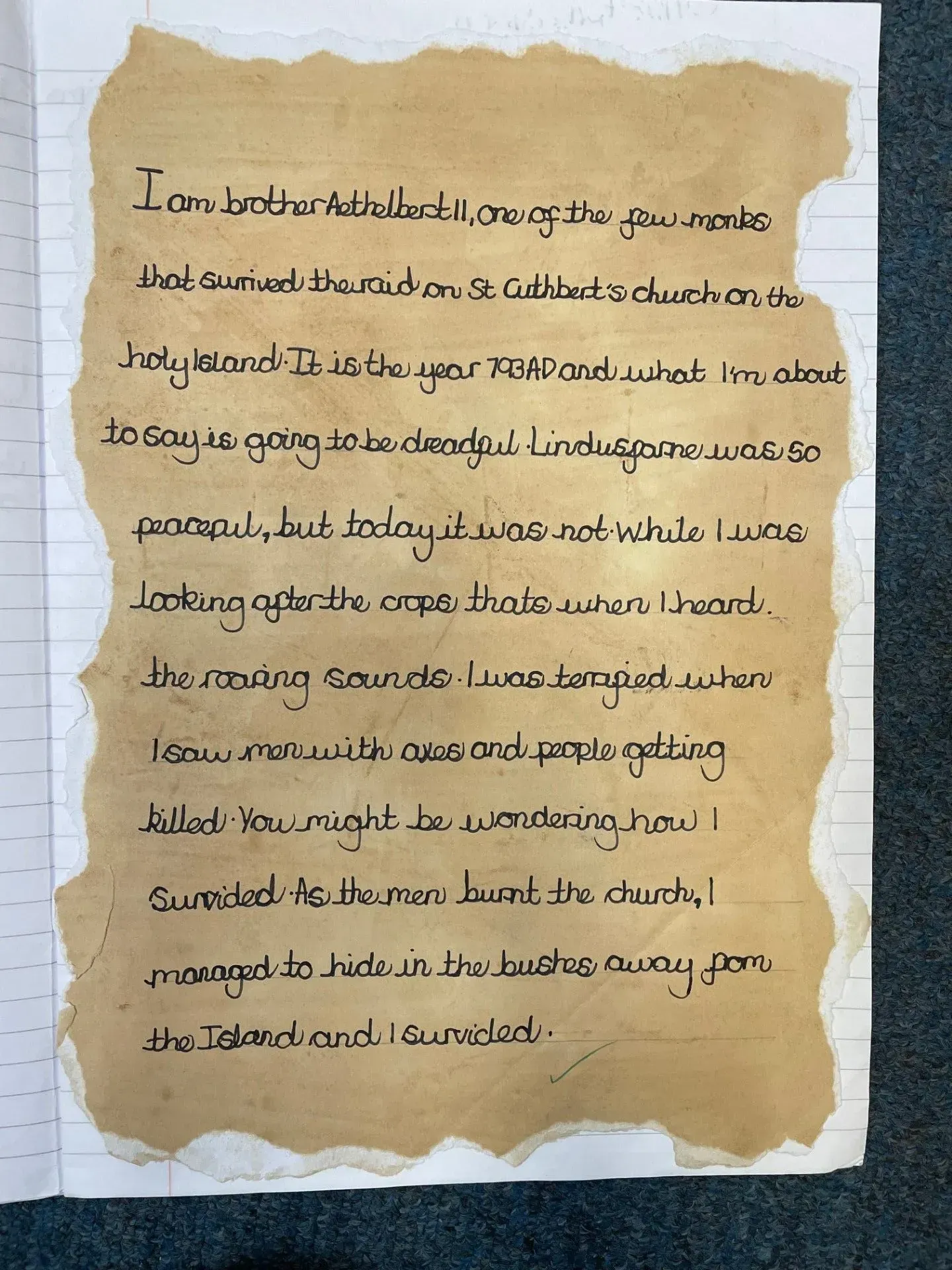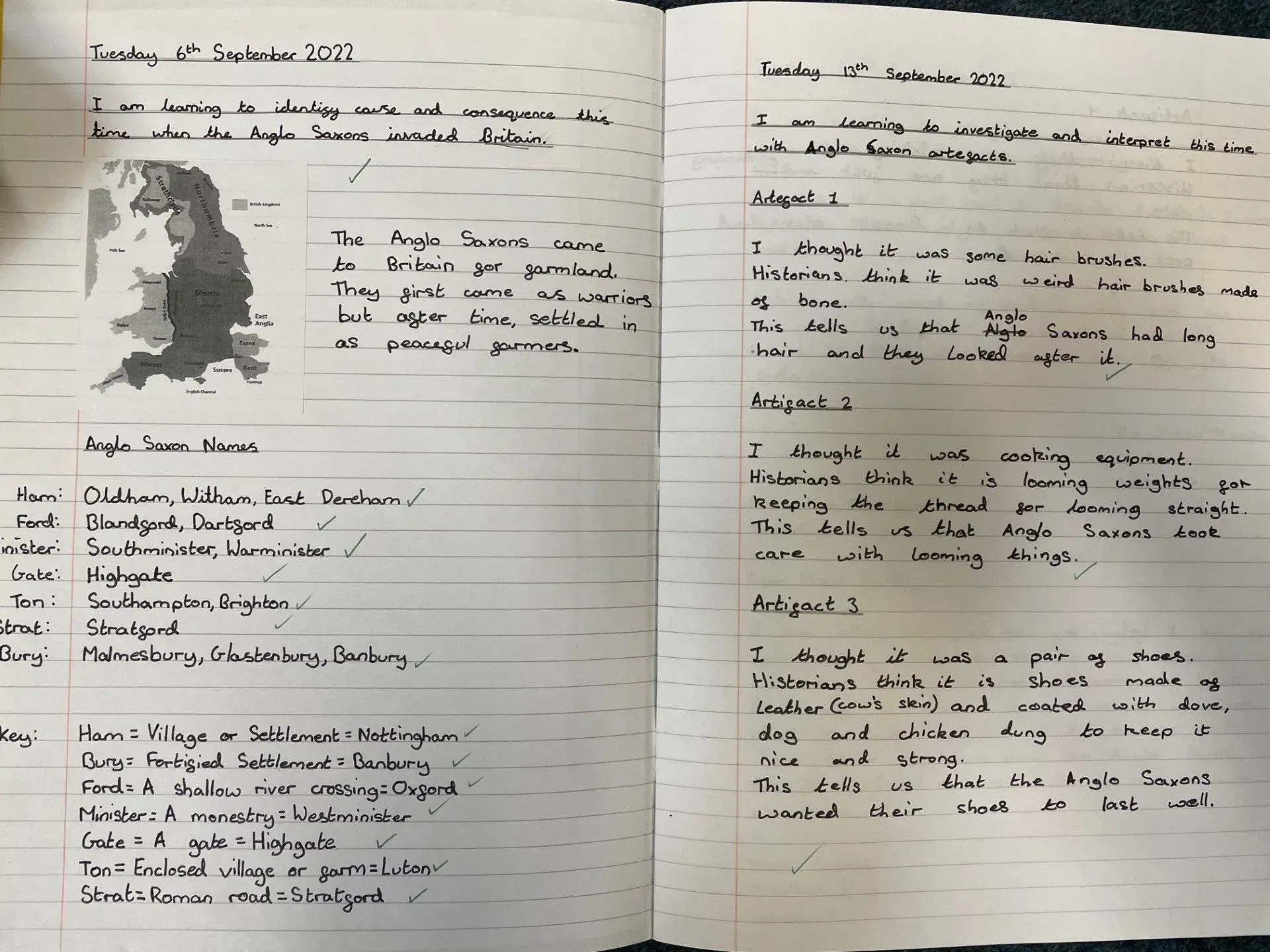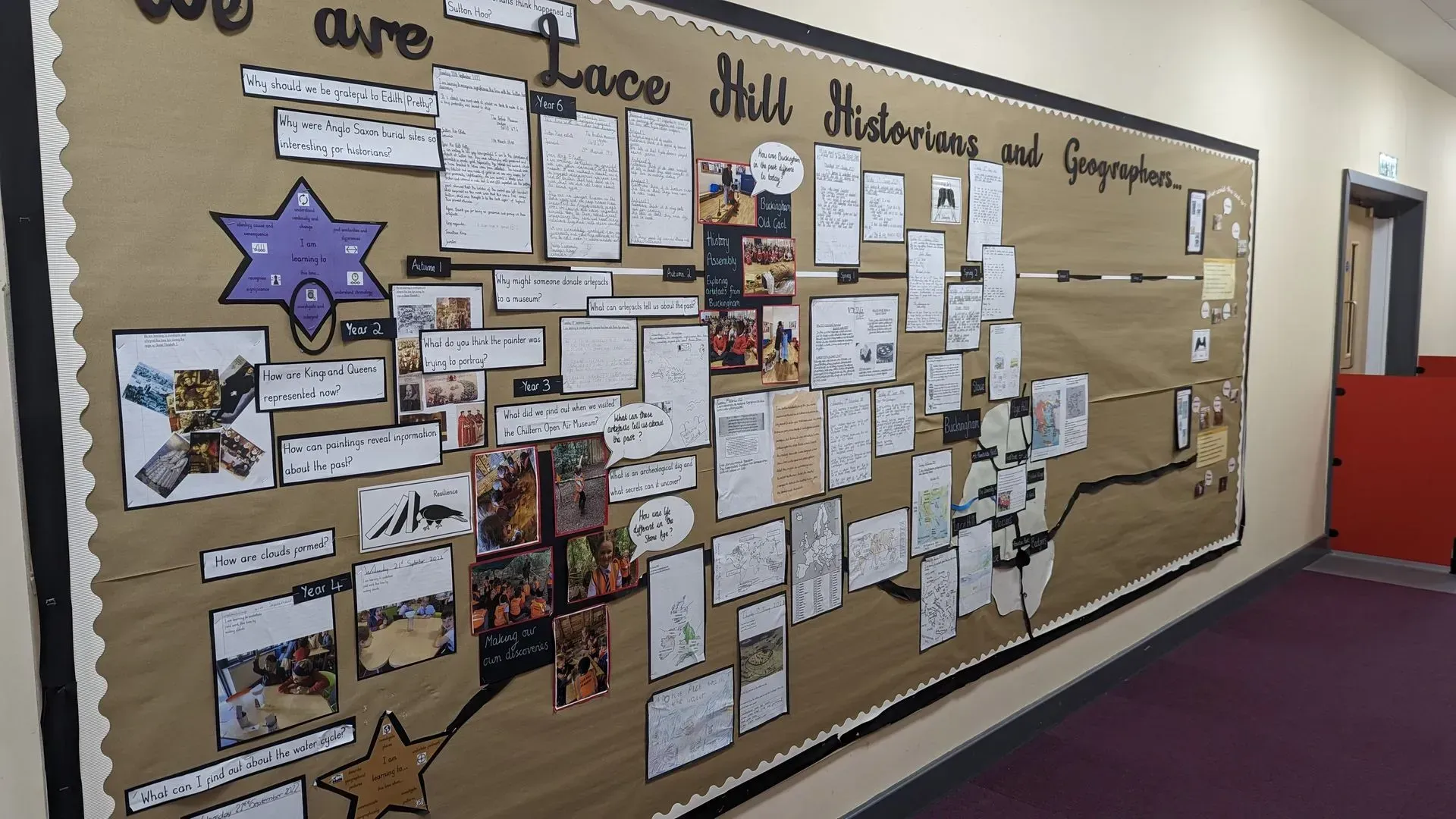History
Intent
History has always been held in high regard at Lace Hill Academy. We pride ourselves on our creative learning environment and classroom displays. Topics are informed by the National Curriculum and are sensitive to children’s interests, as well as the context of the local area. Lace Hill Academy is located on the outskirts of Buckingham, a town steeped in more than 1400 years of rich history, influenced by the Saxons, Danes, Normans, Romans, Tudors and Victorians. The school itself has been built on a modern housing estate, whose street names are linked to the lace-making industries that Catherine of Aragon brought to the area. The development of the town, through examination of maps, photographs and other historical sources are a fascinating point of study for our children, making history relevant and exciting for them.
Parents are supportive of our history curriculum and are keen for their children to find out more about our world. Some of our children are exposed to rich experiences outside of school. We have designed our curriculum so that all of our children have the opportunities to experience and learn about and from the past. Our curriculum reflects the ethnical diversity within our school; we celebrate and recognise the different ethnicity groups including those of black, Asian and Indian heritage.
At Lace Hill Academy, our intent, when teaching history, is to stimulate the children’s curiosity in order for them to develop their knowledge, skills and understanding. The children need to understand the complexity of people’s lives, the process of change, the diversity of societies and relationships between different groups. Through our considered well-planned curriculum, our children will have integrity, empathy and will celebrate differences; we are all different but equal.
Six substantive concepts (shown in the arrows pointing towards the star) form the backbone of our tailored history curriculum, meeting the needs of our school community. Each ambitious unit of work strengthens the children's understanding of history so that they are truly ready for the next stage in their education.
- Community and Culture
- Migration
- Hierarchy and Power
- Invasion
- Trade
- Invention
The children frequently encounter the following six key disciplinary concepts (shown on the points on our curriculum star). Our children develop these skills in every unit of work so that they have a secure grasp of the substantive concepts.
- Continuity and change
- Similarity and difference
- Chronology
- Significance
- Investigation and Interpretation
- Cause and consequence
By tailoring our curriculum to the needs of our pupils through these central concepts, our children achieve the intent below (also shown in the golden tail).
I am a Lace Hill historian because…
- I am curious about what has happened in the past
- I understand chronology and I have a concept of time
- I can use a range of historical sources to find out more about the past
- I have the confidence to question bias
- I have knowledge of local, national and international history
- I can make links between historical events of the past
- I understand how learning from events in the past can help us prepare for the future
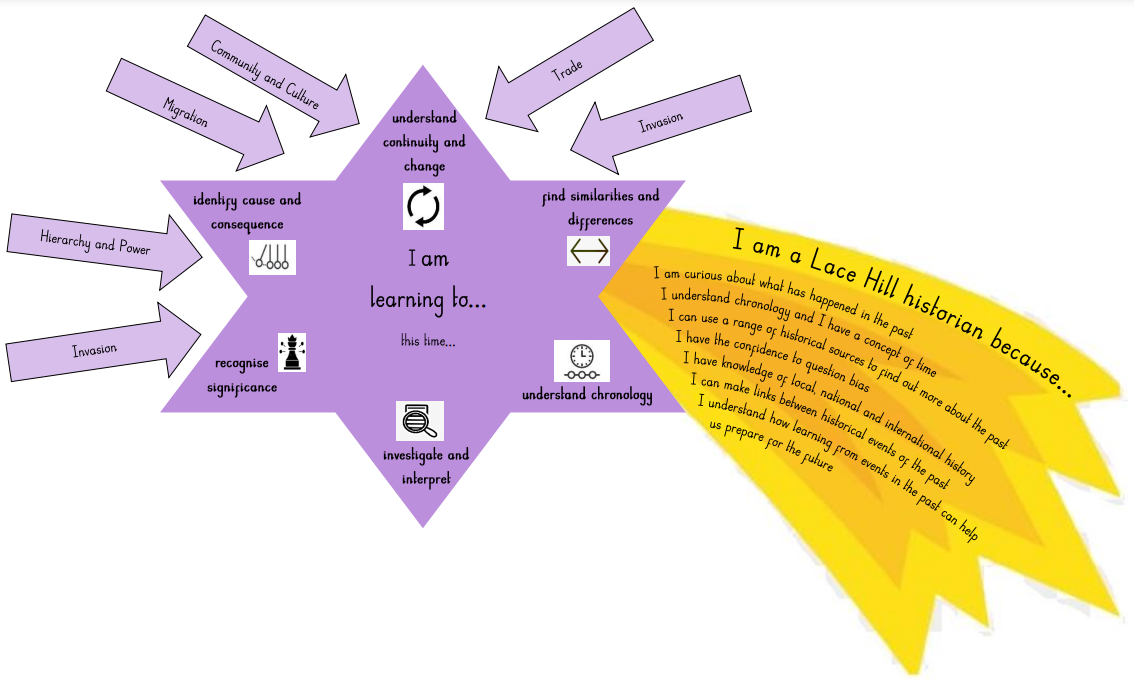
Implementation
By teaching through these concepts, our children are able to make connections between their learning and in turn gain a deeper understanding allowing them to make sense of the facts and the world around them. The curriculum covers local, national and world history and has been carefully planned and sequenced to match the children’s learning needs. Lessons build upon prior learning and enrichment opportunities. The history curriculum links where possible to the geography curriculum, so that learning is meaningful. Staff model explicitly the subject-specific vocabulary, knowledge and skills relevant to the learning.
We place great importance on practical experiences to enhance the history curriculum. Where appropriate, we use historical artefacts, visitors, workshops and visits to excite and enthuse our children to find out more about events and people from the past. We have a wide range of books linked to history in our well stocked school library and class book corners. Fiction books with historical settings are embedded in the English curriculum. We are developing our historical resources: the children have access to artefacts, primary and secondary sources of evidence, past and present maps and computing technology that allows the children to follow their own lines of enquiry and communicate their learning. The local area is fully utilised to provide extensive, enriching opportunities beyond the classroom. For example, when studying toys from the past, our Year 1 children visit MK Museum where they experience a workshop looking into childhoods in the past. Year 5 children visit Bletchley Park, the home of the code breakers in WWII, bringing history to life. After learning about the Great Fire of London, our Year 2 children explore the history of Buckingham and the impact of fire in our locality.
Impact
At Lace Hill Academy, our aim is for our history curriculum to develop curious thinkers, who are excited and inspired by the past and understand that their decisions and actions play a part in shaping the future. By the end of KS2, we want our children to be able to use a wide range of historical sources to ask and answer questions about the past and be able to understand the limitations and question bias of different types of resources so that our learners are prepared for the challenges of Key Stage 3. Our curriculum enables children to develop a chronological understanding of British history from the Stone Age to the present day. They will have had opportunities to draw comparisons with the achievements of the earliest civilizations, study the nonEuropean societies of Mayan civilization, Ancient Egypt and the influence of Ancient Greece on the wider world. Children will have an understanding and perspective about our locality and some of the challenges and achivements that have shaped the local area in which we live. We measure the impact of our history curriculum through monitoring work, listening to the children’s attitudes about history through pupil voice, by taking learning walks/ book looks and termly data analysis.
Here is what our some of our pupils say about history at Lace Hill Academy.
'I enjoy learning about what happened in the past.'
'My favourite lessons are the ones with artefacts where we have to try and work out what they are. They tell us more about the past.'
'I loved learning about what the Romans did and how they invaded places.'
'We have enjoyed learning about famous people in the past and what they did to impact the world such as Anne Frank and Adolf Hitler.'
'Reading books and graphic novels help me to learn more about a subject in history.'


